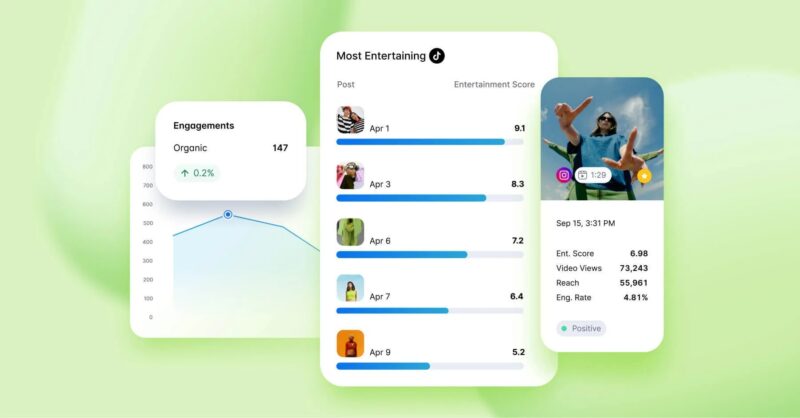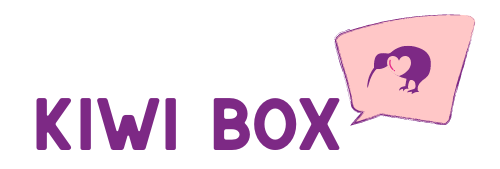If you have ever wondered why some posts rack up thousands of likes while others barely get noticed, the answer is simple but not random: social media algorithms decide who gets seen first.
These algorithms aren’t mystical black boxes; they are carefully engineered systems that prioritize engagement, relevance, and user behavior.
In 2025, every major platform, from Instagram and TikTok to YouTube and X, relies on data signals to determine which content surfaces first in your feed.
Understanding how these signals work can completely change how you create and share content online.
The Real Purpose of Social Media Algorithms

At their core, algorithms exist to keep users scrolling longer. Platforms like Instagram and TikTok make money by showing ads, and the longer people stay on the app, the more ad impressions they can sell.
But to hold your attention, the platform must feed you content that feels personally relevant. This is where algorithmic ranking systems come in.
Each algorithm uses hundreds of data points, sometimes called ranking factors, to predict what you’re most likely to engage with.
Engagement includes likes, comments, shares, saves, watch time, and even subtle behaviors like hovering over a post or replaying a video.
Posts that generate strong engagement early get pushed to wider audiences because the algorithm sees them as “interesting.”
How Algorithms Actually Rank Content
While every platform has its own formula, most algorithms share similar logic. Here’s a simplified breakdown of how the ranking process works:
| Step | Algorithmic Action | What It Measures |
| 1 | Collects user data | Likes, follows, viewing history, dwell time |
| 2 | Scores content relevance | How closely a post matches the user’s interests |
| 3 | Test content with a small group | Engagement rate within minutes or hours |
| 4 | Expands reach if successful | Shares content to broader audiences |
| 5 | Limits low-performing posts | Keeps low-engagement content from spreading |
Essentially, algorithms are running a live experiment every time you post. They show your content to a test audience first. If those users engage quickly and positively, your post gets more visibility. If not, it gets buried.
Engagement: The Main Currency of Visibility
The single most important factor across platforms is engagement velocity, how fast users interact after your post goes live. A post with 100 likes in the first 10 minutes signals to the algorithm that it’s worth promoting. Conversely, a post that receives slow or minimal interaction will likely disappear from feeds quickly.
For creators, this means timing and audience familiarity matter immensely. Posting when your followers are active, using captions that invite responses, and maintaining consistent interaction with your audience all contribute to a higher ranking. Platforms track not only what people do with your posts but also how you respond to them.
For instance, Instagram’s 2025 feed algorithm rewards two-way communication. Replying to comments or engaging with user stories strengthens the “connection” score between your account and those users, which helps future posts appear higher in their feeds.
Why Relevance Matters More Than Follower Count

It’s a myth that only influencers with millions of followers get algorithmic attention. Platforms have shifted toward personalized relevance instead of blanket popularity.
That’s why you sometimes see small accounts go viral overnight. Algorithms weigh how relevant content is to a user’s interests, not how big the creator’s following is.
TikTok exemplifies this best. Its “For You” page doesn’t rely on who you follow but on interest matching; the algorithm analyzes watch patterns, hashtags, and audio choices to find videos similar to what you already enjoy.
YouTube Shorts, Instagram Reels, and even Facebook videos now use the same principle.
The algorithm is asking: “Who else might like this content based on past behavior?”
Creators who understand this dynamic focus on niche content with consistent themes. When your content signals a clear interest area, whether it’s tech reviews, recipes, or fitness tips, the algorithm can confidently recommend it to users with similar profiles.
The Role of Retention and Watch Time
Modern algorithms go beyond likes and shares. They now measure how long people stay on your content.
On platforms like YouTube or TikTok, the completion rate (how often viewers watch your video to the end) is one of the strongest ranking signals.
High retention tells the algorithm that your video is worth pushing to others.
Here’s an example of ranking signals weighted by priority:
| Platform | Top Algorithmic Signals (2025) |
| Engagement speed, saves, DMs, watch time on Reels | |
| TikTok | Watch completion, replays, and comments |
| YouTube | Average view duration, CTR (click-through rate), and user satisfaction surveys |
| X (formerly Twitter) | Likes, retweets, dwell time on posts |
| Group interactions, comments, reaction types (e.g., “love” > “like”) |
Retention also applies to multi-post content like carousels and threads. When users swipe or scroll through your content longer, the system treats that as a positive signal.
The more time spent, the higher your visibility.
Using Data to Strengthen Your Reach

The biggest advantage creators have today is access to analytics. Every platform provides insights into impressions, reach, engagement, and audience demographics.
By analyzing which posts perform best, you can identify what the algorithm favors for your specific niche.
For example:
- If posts with polls or questions get higher engagement, your audience values interaction.
- If your videos perform better at certain hours, your followers have predictable habits.
- If carousel posts outperform single-image posts, you’ve found a preferred format.
Consistently applying these observations trains the algorithm to recognize your account as a reliable content source. Over time, this improves your average ranking position.
Paid Boosts and Strategic Visibility
Organic reach alone can be limiting, especially when algorithms are flooded with new content every second.
This is where paid amplification tools can help creators and businesses reach audiences more effectively.
Services like SocialBoosting provide a targeted visibility lift that aligns with how algorithms measure engagement.
When used strategically, initial exposure can create the engagement momentum needed for the algorithm to expand your reach naturally.
Platforms often use early engagement data to determine long-term post-performance. A small boost in the first few hours, when your content is most vulnerable to being buried, can dramatically influence whether it continues to circulate or fades out.
Algorithm Shifts and Platform Evolution

It’s important to remember that algorithms evolve constantly. Platforms tweak their systems multiple times per year to balance user satisfaction with advertiser goals.
For instance:
- In early 2025, Instagram began prioritizing “original content” over reposted videos.
- TikTok adjusted its system to favor comments and saves, not just watch loops.
- YouTube started rewarding “return viewers,” measuring how often someone comes back to your channel.
Creators who track these updates and adapt quickly tend to retain visibility. Staying rigid or repeating outdated tactics (like keyword stuffing or hashtag spamming) can quickly lead to reduced reach.
Why Transparency Will Define the Next Phase
A growing number of users now question how algorithms influence what they see, and regulators are paying attention.
The European Union’s Digital Services Act (DSA) requires large platforms to explain their recommendation systems.
This transparency push is changing how companies disclose their ranking criteria and may lead to more customizable feed options in the future.
For creators, this shift could be positive. The more transparent the algorithms become, the easier it will be to tailor strategies around verified ranking factors instead of speculation.
The Bottom Line
Social media visibility is not luck; it’s a reflection of how well you align with algorithmic priorities. Posts that spark engagement fast, retain attention, and feel relevant to user interests will always rise to the top. Consistency, audience understanding, and intelligent timing now matter more than ever.

